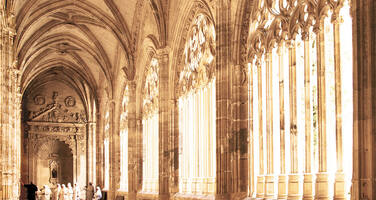Old Town of Segovia and its Aqueduct
Factors affecting the property in 1997*
- Management systems/ management plan
International Assistance: requests for the property until 1997
Total amount approved : 0 USD
Missions to the property until 1997**
Information presented to the Bureau of the World Heritage Committee in 1997
In May 1994, the Academy of History and Art of San Quirce in Segovia informed UNESCO of the poor state of conservation and protection of the aqueduct and nearby historical residences. The Academy also noted that the urban planning and traffic circulation did not favour the protection of the site. The World Heritage Centre consequently alerted the national authorities.
In February 1997, the World Heritage Centre was again informed that construction work was being carried out in the immediate vicinity of the aqueduct, and that a car park had been installed at the base of the pillars of the monument. The World Heritage Centre wrote to the authorities to request information in this regard, and to the ICOMOS National Committee to verify this information.
It is to be noted that, in the nomination file for his property, it was mentioned that special protection plans for the Town of Segovia produced by the Municipal Planning Office of the Town Hall of Segovia were being drafted. To date these protection plans have not been transmitted to the Centre.
Action Required
Having taken note of the information provided by the Secretariat, the Bureau requested the national authorities to provide a report on the measures taken and the plans adopted for the protection of the Old Town of Segovia and its Aqueduct. The Bureau requested ICOMOS to examine the state of conservation of the World Heritage Site of Segovia and to present a report to the twenty-first extraordinary session of the Bureau.
21st extraordinary session in 1997:
ICOMOS presented the following observations as a result of a mission undertaken to the site, particularly in reference to the aqueduct and its surroundings:
- Traffic in the area immediately east of the aqueduct could pose problems in the future. In response to this, the municipality has prepared a project to divert
heavy traffic further east.
- A permit was issued before the inscription on the World Heritage List for an inappropriate building on a square west of the aqueduct. A satisfactory
compromise has now been reached on the height and size of the building.
- The state of conservation of the aqueduct itself has been analysed in-depth and does not pose any major problem.
The Bureau took note of this report and commended the authorities of Segovia for the positive steps that have been taken to preserve the integrity of the aqueduct and its surroundings in Segovia.
Conservation issues presented to the World Heritage Committee in 1997
The Bureau at its twenty-first session requested the Spanish authorities to submit a report on the measures taken and the plans adopted for the protection of the site. It also requested ICOMOS to undertake a mission to the site. The reports are awaited.
Analysis and Conclusion by World Heritage Centre and the Advisory Bodies in 1997
The Bureau may wish to examine information that may be provided at the time of its session and take appropriate action thereupon.
Summary of the interventions
Decisions adopted by the Committee in 1997
21 BUR IV.B.55
Old Town of Segovia and its Aqueduct (Spain)
Having taken note of the information provided by the Secretariat on the state of conservation of the site and inappropriate management of traffic in its vicinity, the Bureau requested the national authorities to provide a report on the measures taken and the plans adopted for the protection of the Old Town of Segovia and its Aqueduct. The Bureau requested ICOMOS to examine the state of conservation of the World Heritage Site of Segovia and to present a report to the twenty-first extraordinary session of the Bureau.
21 COM VII.C.55
Reports on the state of conservation of cultural properties noted by the Committee
VII.55 The Committee noted the decisions of the twenty-first extraordinary session of the Bureau on the following cultural properties as reflected in the report of the Bureau session, Working Documents WHC-97/CONF.208/4B Section III.C.c):
Joya de Ceren Archaeological Site (El Salvador)
Le Canal du Midi (France)
Mont-Saint-Michel and its Bay (France)
Ashanti Traditional Buildings (Ghana)
Maya Site of Copan (Honduras)
Agra Fort, Taj Mahal, Fatehpur Sikri (India)
Quseir Amra (Jordan)
Town of Luang Prabang (Lao People's Democratic Republic)
Pre-Hispanic City of Teotihuacan (Mexico)
Ilha de Mozambique (Mozambique)
Moenjodaro (Pakistan)
Baroque Churches of the Philippines (Philippines)
Old Town of Segovia and its Aqueduct (Spain)
Cultural World Heritage sites in Sri Lanka
Ancient City of Damascus (Syrian Arab Republic)
Historic Areas of Istanbul (Turkey)
Itchan Kala, Historic Centre of Bukhara (Uzbekistan)
Shibam and Zabid (Yemen).
Documents examined by the Committee
21COM (1997)Exports
* :
The threats indicated are listed in alphabetical order; their order does not constitute a classification according to the importance of their impact on the property.
Furthermore, they are presented irrespective of the type of threat faced by the property, i.e. with specific and proven imminent danger (“ascertained danger”) or with threats which could have deleterious effects on the property’s Outstanding Universal Value (“potential danger”).
** : All mission reports are not always available electronically.


